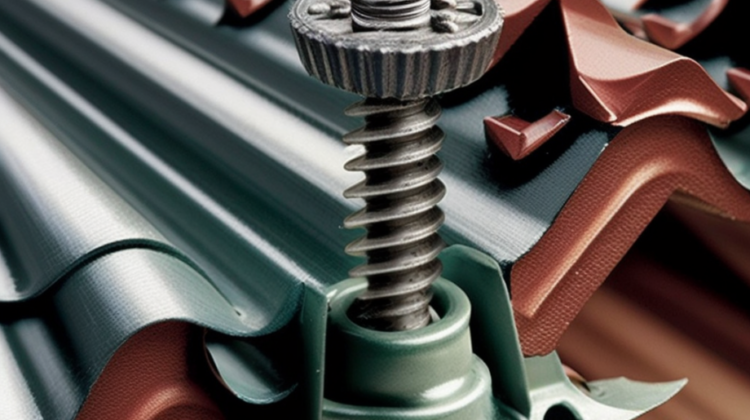
Metal roofs are a popular choice for commercial and residential buildings due to their durability, low maintenance requirements, and resistance to weather and fire. However, like any other component of a building, metal roof screws can wear out over time and require replacement to ensure the roof’s continued strength and stability.
The frequency with which screws need to be replaced in a metal roof will depend on various factors, such as the type of screw used, the climate and environmental conditions in the area, and the age and condition of the roof itself. In general, metal roof screws should be inspected regularly and replaced as needed to prevent potential leaks, structural damage, and other issues.
One of the primary reasons for screw replacement in metal roofs is rust and corrosion. Over time, exposure to moisture, salt, and other environmental factors can cause screws to rust and deteriorate, compromising their strength and ability to hold roof panels securely. Depending on the quality and coating of the screws, this process can take anywhere from a few years to several decades.
To determine whether screws need to be replaced due to rust or corrosion, inspecting them regularly is essential. This can be done visually or with the help of a moisture meter or other testing equipment. If screws appear to be rusted or corroded, they should be replaced promptly to prevent further damage to the roof.
Another reason for screw replacement in metal roofs is wear and tear. Over time, the constant expansion and contraction of the roof panels due to temperature changes and weather conditions can cause screws to loosen or break. Heavy wind or rain can also cause screws to shift or become dislodged, compromising the roof’s overall stability.
To ensure that screws are holding the roof panels securely in place, a professional should inspect and maintain metal roofs regularly. A roofing contractor can assess the condition of the screws and other components of the roof, identify any potential issues, and recommend the best course of action.
Generally, it’s a good idea to have metal roof screws inspected every 2-3 years or more frequently in areas with harsh weather conditions, such as high winds, heavy rain, or extreme temperatures. Depending on the inspection results, screws may need to be replaced or tightened to ensure the roof’s continued integrity.
In addition to regular inspections and maintenance, building owners can do a few other things to help prolong the lifespan of their metal roof screws. For example, choosing high-quality screws with a durable coating can help prevent rust and corrosion. Ensuring the roof panels are correctly installed and secured can reduce the likelihood of screws becoming loose or damaged over time.
It’s also important to consider the climate and environmental conditions in the area when selecting and installing metal roof screws. For example, suppose the building is in a room with high humidity or saltwater exposure. In that case, it may be necessary to use special screws designed for these conditions to prevent premature rusting or corrosion.
Finally, building owners should be aware of the signs that their metal roof screws may need to be replaced. These can include visible rust or corrosion, loose or damaged screws, or leaks in the roof that faulty screws could cause. If any of these signs are present, it’s crucial to have a professional roofing contractor inspect the roof and recommend the best course of action.
In summary, metal roof screws are essential to any building’s roof, and regular inspections and maintenance are vital in ensuring their continued strength and stability. By working with a professional roofing contractor, choosing high-quality screws, and staying on top of maintenance and repairs, building owners can protect their investment and enjoy the benefits of a durable, long-lasting metal roof for many years.
